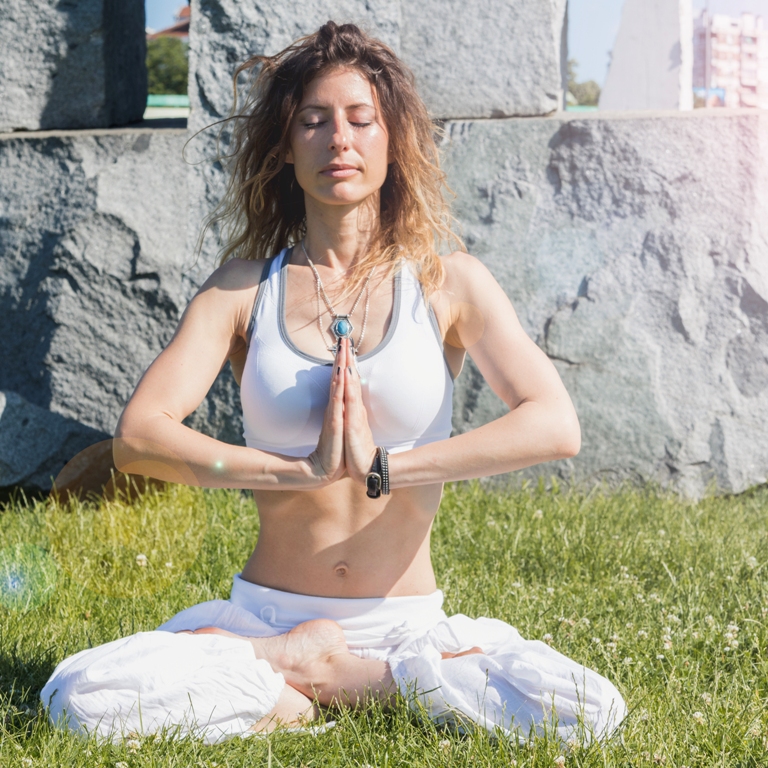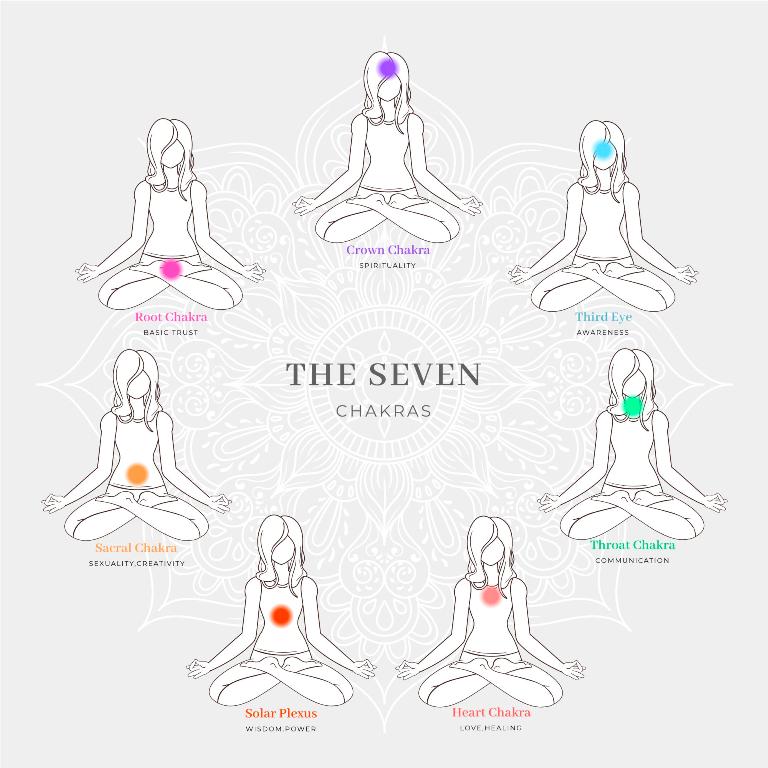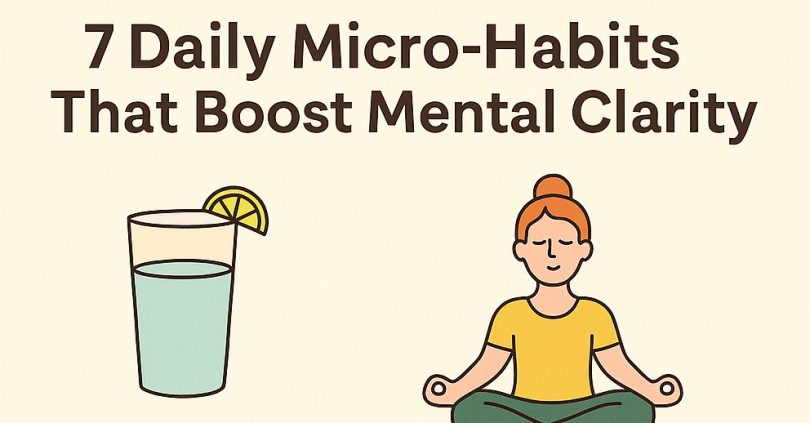Kundalini meditation is more than just a relaxation technique—it’s a transformative practice designed to awaken the powerful energy lying dormant at the base of your spine. Rooted in ancient traditions, this meditation is gaining popularity in modern wellness circles for its profound physical, emotional, and spiritual benefits. Whether you’re a beginner or a seasoned practitioner, understanding Kundalini meditation can help you unlock deeper levels of awareness and vitality.
Table of Contents
- Understanding Kundalini Meditation
- The Concept of Kundalini Energy
- How to Practice Kundalini Meditation
- Benefits of Kundalini Meditation
- Risks and Challenges of Kundalini Meditation
Key Takeaways
- Kundalini meditation aims to awaken your inner energy for spiritual growth and well-being.
- This practice involves specific techniques like breathwork, mantras, and mudras to stimulate energy flow.
- While it offers numerous benefits, Kundalini meditation can also present challenges if not practiced carefully.
Understanding Kundalini Meditation
What is Kundalini Meditation?
Kundalini meditation is a spiritual practice focused on awakening the Kundalini energy—a coiled, dormant energy located at the base of the spine. This energy is believed to be the source of human consciousness and spiritual enlightenment. Through a series of meditative techniques, practitioners aim to activate this energy, allowing it to rise through the chakras and promote inner transformation.
History of Kundalini Meditation
The origins of Kundalini meditation date back to ancient India, where it was practiced as part of the broader spiritual discipline of yoga. It was kept as a secret, often reserved for advanced practitioners or spiritual leaders. Over the centuries, it has evolved and become more accessible to the public, making its way into mainstream wellness practices today.

The Concept of Kundalini Energy
What is Kundalini Energy?
Kundalini energy is often depicted as a coiled serpent at the base of the spine, symbolizing the potential of untapped power within each individual. When awakened, this energy flows upwards through the body, activating the seven chakras, or energy centers, along the spine. This process is believed to result in heightened awareness, greater consciousness, and spiritual enlightenment.
The Role of Chakras in Kundalini Meditation
Chakras are the focal points of energy in the body, each associated with different physical, emotional, and spiritual functions. In Kundalini meditation, the goal is to activate these chakras in sequence, from the root to the crown, to create a balanced and harmonious energy flow. Below is a brief overview of the primary chakras involved:
| Chakra | Location | Associated Aspect |
|---|---|---|
| Root Chakra (Muladhara) | Base of the spine | Grounding and survival |
| Sacral Chakra (Swadhisthana) | Lower abdomen | Creativity and sexuality |
| Solar Plexus Chakra (Manipura) | Upper abdomen | Confidence and power |
| Heart Chakra (Anahata) | Center of the chest | Love and compassion |
| Throat Chakra (Vishuddha) | Throat | Communication |
| Third Eye Chakra (Ajna) | Forehead between the eyes | Intuition and insight |
| Crown Chakra (Sahasrara) | Top of the head | Spiritual connection |
How to Practice Kundalini Meditation
Preparing for Kundalini Meditation
To begin your journey into Kundalini meditation, it’s essential to create a conducive environment that supports relaxation and focus. Find a quiet space where you won’t be disturbed, and wear comfortable clothing to allow for easy movement. It’s recommended to start with a brief session of breathwork or simple stretching exercises to prepare your body and mind for the meditation.

Kundalini Meditation Techniques
There are various techniques used in Kundalini meditation, each aimed at activating and guiding the energy flow within the body. Common practices include:
- Breathwork: Techniques like Breath of Fire help stimulate energy flow.
- Mantras: Repetition of specific sounds or phrases to focus the mind and channel energy.
- Mudras: Hand positions that help direct energy and support the meditation process.
Guided Kundalini Meditation vs. Self-Practice
For those new to the practice, guided Kundalini meditation sessions can be particularly beneficial. These sessions, often led by experienced practitioners, offer step-by-step instructions and support. As you become more comfortable, you can transition to self-practice, tailoring the techniques to your personal preferences and energy flow.

Benefits of Kundalini Meditation
Mental and Emotional Benefits
Practicing Kundalini meditation can lead to significant improvements in mental and emotional well-being. By promoting relaxation and reducing stress, it helps to balance emotions and enhance mental clarity. Many practitioners report feeling more grounded, focused, and emotionally resilient after regular sessions.
Physical Benefits
The physical benefits of Kundalini meditation extend beyond mere relaxation. It enhances energy levels, improves sleep quality, and can even support the body’s natural healing processes. Regular practice helps to balance the body’s energy, leading to an overall sense of well-being.
Spiritual Benefits
On a deeper level, *Kundalini meditation facilitates spiritual growth and self-awareness. It offers a pathway to explore and connect with one’s higher self, encouraging a sense of unity and purpose. This practice can open the door to profound personal insights and a more harmonious way of living.
Risks and Challenges of Kundalini Meditation
Potential Risks
While the benefits of *Kundalini meditation are numerous, it’s not without its risks. Premature or improper awakening of Kundalini energy can lead to physical discomfort, emotional turbulence, or even psychological challenges. It’s crucial to approach this practice with caution and respect, ideally under the guidance of an experienced teacher.
Common Challenges
Many beginners face challenges such as difficulty in maintaining focus, managing intense emotions, or dealing with unexpected sensations. These are normal parts of the journey and can often be navigated with patience and proper guidance. It’s important to listen to your body and mind, progressing at a pace that feels right for you.
Kundalini Awakening: Signs and Symptoms
Signs of Kundalini Awakening
Experiencing a Kundalini awakening can be a profound and life-changing event. Signs of awakening vary from person to person but commonly include physical sensations such as tingling or heat along the spine, emotional shifts, vivid dreams, and heightened intuition. You may also feel a strong urge to make positive changes in your life, such as adopting healthier habits or pursuing spiritual goals.

Managing Symptoms of Kundalini Awakening
If you experience symptoms of *Kundalini awakening, it’s important to approach them with mindfulness and care. Practices like grounding exercises, maintaining a balanced diet, and regular physical activity can help manage these intense experiences. Remember, it’s normal for the awakening process to unfold gradually, and there’s no rush to fully awaken the Kundalini energy all at once.
Kundalini Meditation for Beginners: Tips and Precautions
Beginner Tips
Starting with *Kundalini meditation can feel overwhelming, but it doesn’t have to be. For beginners, the key is to start slow and be consistent. Begin with short sessions of 5-10 minutes, gradually increasing the time as you become more comfortable. Focusing on your breath and being gentle with yourself will help ease you into the practice.
Precautions
Given the powerful nature of *Kundalini meditation, it’s essential to take precautions, especially if you’re new to meditation. Always listen to your body, and don’t push yourself beyond your limits. If possible, seek guidance from a qualified teacher who can provide personalized advice and help you navigate the practice safely.
Common Myths and Misconceptions About Kundalini Meditation
Debunking Myths
There are many myths surrounding *Kundalini meditation, often making it seem more mysterious or dangerous than it truly is. One common misconception is that Kundalini awakening will lead to immediate enlightenment or psychic powers. While the awakening process can bring about significant personal growth, it’s not a quick fix or a shortcut to spiritual mastery.
The Reality of Kundalini Meditation
In reality, *Kundalini meditation is a disciplined practice that requires patience, self-awareness, and consistent effort. It’s accessible to anyone who is willing to approach it with an open mind and a respectful attitude. Understanding that each person’s journey with Kundalini is unique can help set realistic expectations and encourage a more positive experience.

Kundalini Meditation in Modern Times
Relevance in Today’s World
As modern life becomes increasingly fast-paced and stressful, practices like *Kundalini meditation offer a valuable tool for finding balance and inner peace. Many people turn to Kundalini as a way to disconnect from the noise of daily life and reconnect with their true selves. The growing interest in mindfulness and wellness trends has made *Kundalini meditation more accessible than ever before.
Kundalini Meditation in Popular Culture
*Kundalini meditation has also made its way into popular culture, with numerous celebrities and public figures endorsing its benefits. This increased visibility has helped demystify the practice, encouraging more people to explore it as a means of personal transformation and holistic well-being.
Frequently Asked Questions (FAQs)
What is the purpose of Kundalini meditation?
The primary purpose of *kundalini meditation is to awaken the Kundalini energy, allowing it to rise through the chakras and facilitate personal and spiritual growth. This process can lead to a heightened state of awareness, inner peace, and a deeper connection with oneself.
How long does it take to see results from Kundalini meditation?
Results from *kundalini meditation vary depending on the individual and the consistency of practice. Some people may experience noticeable changes in their mental or emotional state within a few sessions, while others might take longer. Regular practice is key to experiencing the full benefits of *kundalini meditation.
Can anyone practice Kundalini meditation?
Yes, anyone can practice *kundalini meditation, but it’s essential to approach it with the right mindset and respect for the practice. Beginners are encouraged to start slow and, if possible, seek guidance from an experienced teacher, especially if they are unfamiliar with meditation techniques.
What are the dangers of Kundalini meditation?
While *kundalini meditation offers many benefits, it also carries risks if not practiced correctly. Premature awakening or improper techniques can lead to discomfort, emotional upheaval, or psychological challenges. Practitioners should proceed with caution, listen to their bodies, and avoid pushing the limits of their comfort.
How do I know if my Kundalini is awakening?
Signs of *kundalini awakening can include physical sensations such as tingling or heat along the spine, emotional changes, heightened intuition, and vivid dreams. It’s important to approach these experiences with patience and self-compassion, allowing the process to unfold naturally.
Is Kundalini meditation suitable for beginners?
Yes, *kundalini meditation can be suitable for beginners if approached with the right mindset and guidance. Starting with simple techniques and gradually building up the practice can help beginners ease into the experience without feeling overwhelmed.
How often should I practice Kundalini meditation?
Consistency is key when it comes to *kundalini meditation. While there is no one-size-fits-all answer, many practitioners find that daily or several times a week offers the best results. It’s important to listen to your body and find a routine that works for you.






